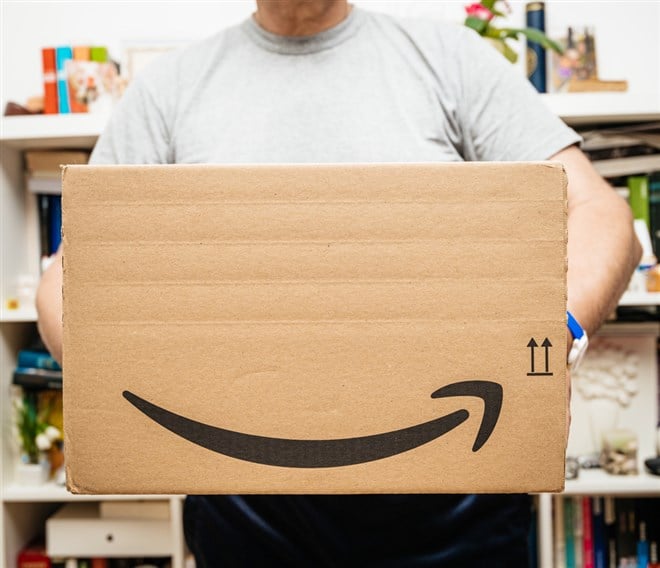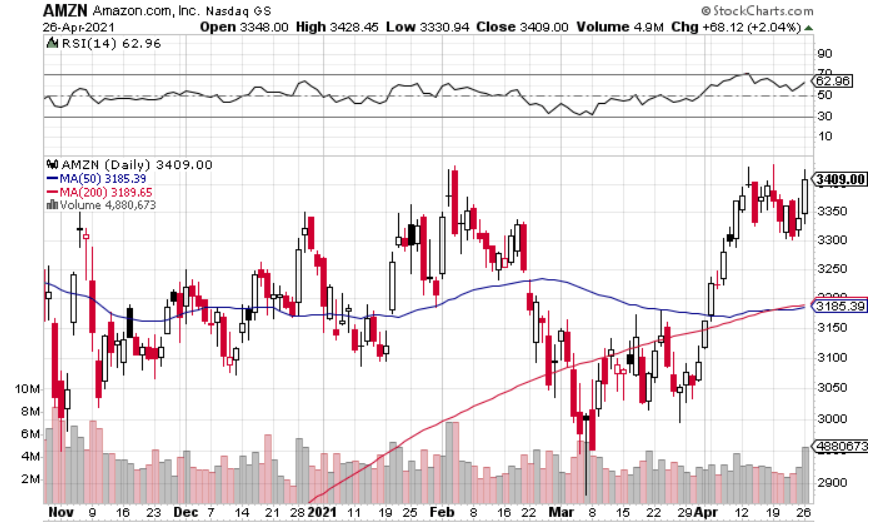
In its Q4 2020 earnings release, Amazon NASDAQ: AMZN announced that legendary CEO Jeff Bezos would step down during Q3 2021 and Amazon Web Services CEO Andy Jassy would take over as Amazon CEO. While Bezos is going to become Amazon’s executive chairman, he will clearly play a smaller role at Amazon moving forward.
Amazon shares didn’t move much on the news, but it certainly helped that the e-commerce giant blew away consensus estimates for the fourth quarter:
- The company delivered a record $125.56 billion in fourth-quarter revenue, beating expectations of $119.7 billion. It was the first time Amazon broke the $100 billion mark.
- Earnings of $14.09 per share were nearly double the $7.23 forecasted by Wall Street.
On April 15, Bezos wrote his final annual letter to shareholders. One of the main takeaways was that Amazon Prime still has plenty of upside.
Amazon Prime Creates A Ton of Value
In January 2020 – right before the pandemic changed life as we know it – Jeff Bezos announced that his company had just exceeded 150 million Prime members worldwide. It was an incredible accomplishment but many investors wondered how many more people could possibly sign up for Prime in the future. Quite a few, it turns out.
In the 2020 shareholder letter, Bezos announced that Prime now has more than 200 million global subscribers. That means Prime has added more than 50 million members in around 15 months.
It’s pretty obvious that Prime provides a lot of value to subscribers, but Bezos decided to quantify that value in the letter.
He started by saying, “If you want to be successful in business (in life, actually), you have to create more than you consume. Your goal should be to create value for everyone you interact with. Any business that doesn’t create value for those it touches, even if it appears successful on the surface, isn’t long for this world. It’s on the way out.”
Then, he got into the hard numbers, comparing the amount of time it takes to order items on Amazon to the time it takes to go to a physical store. He estimated that the average Prime member is saving 75 hours per year. Next, he applied an extremely conservative $10 per hour as the value of the time savings. The average value created by a Prime subscription came out to $750 a year. Subtract the $119 per year subscription cost and you have savings (value) of just over $630 per year.
Of course, you can play around with the numbers. Some subscribers are saving less (or more) time. Others value their time at a lot higher than $10 per hour. But the point is that Prime is adding a lot of value to people’s lives.
That is important to shareholders for two reasons:
- New Prime subscribers are likely to derive a lot of value from the service, so they are also likely to remain loyal customers for many years to come. Even if members get a little less value from the subscription in a post-pandemic world, it is unlikely that they will ever get negative value from it.
- Amazon can likely raise prices and keep most of its customers. Let’s say Amazon raises the cost of Prime to $149 a year. That would equate to around a 25% boost in Prime subscription revenue. Or $6 billion, to put it in dollars and cents. But that $750 average value means that the average subscriber would still 5x their money in that scenario. Not too shabby.
But what about the competition?
While Amazon isn’t the only game in town, it is very far ahead of the pack. According to eMarketer, around 40 cents of every dollar spent online in the United States goes through Amazon’s marketplace. Let that sink in for a moment.
Of course, no lead is insurmountable, but a $30 price increase is unlikely to send subscribers running for the hills.
How Should You Play Amazon?
At 72.1x forward earnings, Amazon shares are trading at a lofty valuation. But again, Prime has the potential to bring in a lot more revenue. And it’s not the only growth driver in the company; Amazon Web Services, for example, is the global leader in cloud-based infrastructure-as-a-service (IaaS) platforms.
With years of strong double-digit growth on the horizon, Amazon’s current valuation is easily justifiable.
But is now the time to get in? Let’s take a look at the chart.

As you can see, Amazon has been forming a “cup-and-handle” pattern between around $2,900 and $3,435 over the last three months. Yesterday, shares surged 2% to $3,409 on high volume.
It is tempting to get in now, but you may want to wait until Amazon clears $3,450 on high volume before picking up shares. If that happens, it could be smooth sailing ahead for AMZN.
Before you consider Amazon.com, you'll want to hear this.
MarketBeat keeps track of Wall Street's top-rated and best performing research analysts and the stocks they recommend to their clients on a daily basis. MarketBeat has identified the five stocks that top analysts are quietly whispering to their clients to buy now before the broader market catches on... and Amazon.com wasn't on the list.
While Amazon.com currently has a "Buy" rating among analysts, top-rated analysts believe these five stocks are better buys.
View The Five Stocks Here
Which stocks are likely to thrive in today's challenging market? Click the link below and we'll send you MarketBeat's list of ten stocks that will drive in any economic environment.
Get This Free Report